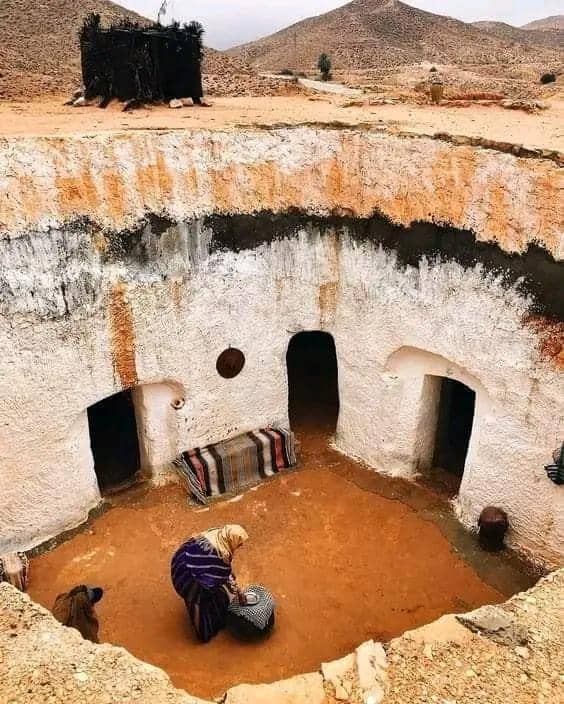In the remote town of Matmata, located in southern Tunisia, a unique architectural marvel has stood the test of time. The troglodyte houses, carved directly into the earth, have provided shelter and respite from the harsh desert climate for centuries.
These underground dwellings, with their distinctive pit-like structures and interconnected rooms, offer a glimpse into the ingenious adaptation of the Berber people to their environment.
The origins of Matmata’s troglodyte houses can be traced back to the 14th or 15th century, when Berber tribes sought refuge in the mountains to escape Arab conquest and assimilation policies.
The favorable soil conditions and the need for protection from the scorching sun and chilly winds led to the creation of these subterranean homes. The troglodyte houses are constructed by digging into the soft rock, creating a labyrinth of rooms surrounding a central courtyard.
The courtyard not only brings in fresh air but also serves as a gathering place for family members and a space for daily chores.
One of the most striking features of the troglodyte houses is their ability to maintain a constant temperature of around 20 degrees Celsius throughout the year.
The clay-gypsum layers of the soil act as natural insulation, keeping the homes cool in the summer and warm in the winter. The whitewashed walls and doorways, engraved with Berber symbols, add to the unique aesthetic of these underground structures.
Despite their historical significance and cultural value, the troglodyte houses of Matmata have faced challenges in recent decades.
The construction of the above-ground settlement of Nouvelle Matmata in the 1960s, following a modernization policy by the Tunisian government, led to a substantial rural depopulation and the abandonment of many traditional troglodyte houses.
As younger generations migrate to urban centers in search of employment and a different way of life, the preservation of this unique architectural heritage has become a pressing concern.
However, in recent years, there has been a revival of interest in Berber culture and heritage.
The troglodyte houses of Matmata have gained global recognition and have become a popular tourist attraction. Visitors can tour the underground homes, experience the traditional way of life, and learn about the rich history and cultural significance of these remarkable structures.
As efforts are made to preserve and promote the troglodyte houses as a UNESCO World Heritage site, the future of this architectural gem remains uncertain, but its enduring legacy continues to captivate and inspire those who encounter it.

